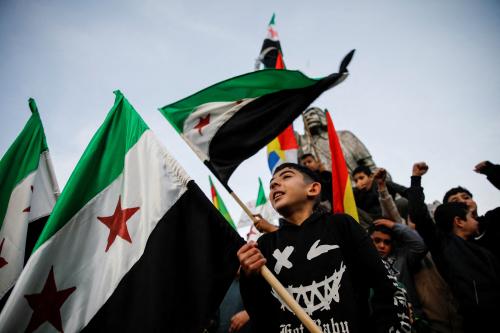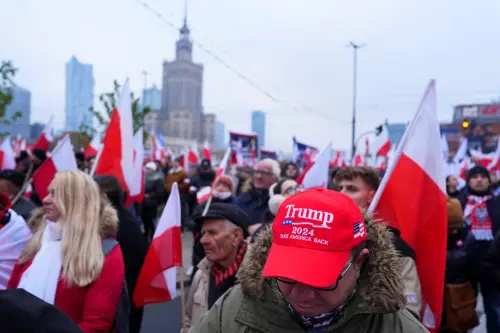Since the election of the reformist President Mohammad Khatami in 1997, both the Clinton and Bush administrations have tried to confront Iran about its nuclear ambitions without alienating the Iranian people. Time, it appeared, was on America’s side. Washington believed that Iran’s nuclear program had made only limited progress, while Khatami’s election heralded the beginning of the end of the clerical regime. After Iran’s people swept aside the Islamic revolution, U.S.-Iran enmity would vanish along with Tehran’s desire for a nuclear bomb.
Over the last three years that optimism diminished and finally died. In 2002 the political wing of a violent Iranian opposition group shattered American complacency by revealing that Iran had secret facilities to produce fissile material at Natanz and Arak. More scrutiny followed, and by 2004 the normally cautious International Atomic Energy Agency reported that Iran was secretly seeking to enrich uranium and plutonium, and the agency’s governing board said that it “deplored” Tehran’s lack of cooperation. As evidence of Iran’s nuclear program mounted, faith in “people power” fell. In February 2004 conservative candidates swept the pro-reform parliament from office, and another victory for the old regime is expected in June when Khatami’s successor as president will be elected. The bad guys have won.
Iran’s nuclear program is a daunting challenge made even more complex by the conservatives’ consolidation of power. Fortunately, Iran is generally open to Western reporters and scholars and has occupied the attention of senior government officials for decades. The result is a rich, if imperfect, set of works that should inform American policy in the years to come.
What happened to the reform movement? Geneive Abdo and Jonathan Lyons, two American journalists, arrived in Iran in 1998 at the peak of euphoria for Khatami. Their work, Answering Only to God: Faith and Freedom in Twenty-First-Century Iran (Henry Holt and Company, 2003), explores the reform movement’s ideologues, political leaders, and media outlets. Among the reformists they describe are not only young Iranians who never experienced life under the shah, but also former die-hard Islamic revolutionaries like Grand Ayatollah Hossein Ali Montazeri and Mohammad Mousavi-Khoeiniha, who proudly marched under Ayatollah Ruhollah Khomeini’s banner but now reject the system he established. Quietly joining the reformists who saw the clerical regime as corrupt and repressive were many senior religious leaders who considered the politicization of the clergy under Khomeini as bad for politics and corrupting of the faith.
Christopher de Bellaigue, another journalist, provides a painful (and at times beautiful) counterpoint to Abdo and Lyons. In his chatty and discursive memoir, In the Rose Garden of the Martyrs (HarperCollins, 2005), de Bellaigue gives us a sense of daily life in Iran, whether he is discussing taxi drivers’ manners or sexual impropriety in seminaries, and takes on more-political matters, like the Iranian side of the Iran-Contra affair and (in a chapter horrifying in its matter-of-fact tone) the lasting effects of Iraqi poison gas on Iranian veterans of the Iran-Iraq War. The Iran that comes through is cynical, conflicted, and bitter, yet surprisingly vibrant.
These books spell out the widespread disillusionment with the Islamic order, which raises the question of why Khatami failed when he had so much public support at the start. Ironically, the answer can be found in the rule of law, something Americans usually assume goes hand in hand with democracy. Iran’s system places tremendous power in the supreme leader, a religious figure, and the judiciary, not in the president and the legislature. The conservatives could legally define their own powers and then use them against the reformers.
For example, the conservative-dominated Council of Guardians, which is charged with ensuring that only properly Islamic candidates run for office, disqualified thousands of liberal candidates. The few reformers who survived that vetting faced conservative candidates with the full power of the state behind them. Western observers who focused on the cosmopolitan and exciting reform leaders missed the basic power asymmetry.
But that is only part of the tale. The people power that had propelled Khatami in the past evaporated. Largely because Khatami wanted to reform the old system, not replace it, he ended up bringing Iranians neither freedom nor prosperity. The president also feared that if he called his supporters to the streets, the civil strife might spiral out of control. De Bellaigue is particularly good at showing the resulting cynicism among Iranians scornful of the regime yet disillusioned with the reformers. Although the democratic impulse remains strong in Iran, the democratic movement has for now collapsed.
With regime change a dim hope, the possibility of an Iranian bomb requires the world to develop a coherent policy toward Iran’s conservative-led government. As Geoffrey Kemp declares in “Iran’s Bomb,” a March 2004 Nixon Center report that brings together the perspectives of American and Iranian scholars, Iran’s bomb development could make it more aggressive, propel its neighbors to seek nuclear weapons, and enable terrorist groups to acquire them, too.
Western options range from the poor to the abysmal. Military approaches are relatively easy to dismiss. Iran is simply too big to invade, and the United States is militarily overstretched and diplomatically unpopular even with its traditional allies because of the war in Iraq. A narrow strike on Iranian nuclear facilities similar to what Israel did in Iraq in 1981, when it destroyed the Osirak nuclear reactor and set back Iraq’s bomb, would probably fail, as Iran has dispersed its facilities.
Political solutions also have their disadvantages. Kemp, the Nixon Center’s director of regional strategic programs, stresses the value of a “grand bargain” that would prohibit Iran’s support for terrorism as well as its nuclear program in exchange for an end to sanctions and the halting of any U.S. interference in Iran’s domestic politics. In “Iran Builds the Bomb,” in Vol. 46, No. 4, of the journal Survival, Ray Takeyh, of the Council on Foreign Relations, advocates offering Iran concessions on sanctions and giving Tehran a voice in Iraqi affairs in order to influence Iran’s internal debate over the bomb.
But Kemp himself notes that the Europeans would be at best lukewarm supporters of a grand bargain, and it is risky to tie grave American concerns about nuclear weapons to a host of other issues that Kemp sees as less vital, like human rights. Concessions have a place, but they would not eliminate Iran’s desires for a nuclear weapon.
Kenneth M. Pollack, a senior fellow at the Brookings Institution (and a friend and colleague of mine), was director of Persian Gulf affairs in the National Security Council for the Clinton administration. He tries to synthesize policy options in The Persian Puzzle (Random House, 2004). He offers a good general history of Iran, focused on U.S.-Iran relations, and a fascinating account of the inner workings of American policy toward Iran in the Clinton era, but his work is particularly concerned with how to handle Iran’s nuclear program today. Pollack contends that regime change is far off and that all of the above options, by themselves, would fail and perhaps even backfire. Pollack instead advocates a “triple track”: keeping open the prospect of a grand bargain, simultaneously offering tit-for-tat exchanges on daily strategic and diplomatic developments, and laying the groundwork for containing Iran should engagement fail.
All the policy-focused works indicate that the road to Tehran passes through Paris, London, and Berlin—a path that the Bush administration has reluctantly recognized in recent months. To use carrots, like consideration for membership in the World Trade Organization, and sticks, like U.N.-mandated economic sanctions, the United States must work with Europe. Europe has become more aggressive in calling Iran on its nuclear infractions, partly out of genuine outrage at Iran’s obfuscations but also out of fear that European inaction would lead to a unilateral U.S. military response. The key, as Kemp notes, is to avoid EU-U.S. differences, particularly public ones.
Finally, we should prepare to hedge our bets should Iran develop a nuclear weapon. Pollack notes that his and other strategies may fail and that “we may find ourselves forced to live with a nuclear-armed Iran.” Iranians of all political stripes say that no deal will stop them from enriching uranium, and it would be foolish not to believe them.
Hedging involves several steps. First, the United States must reassure Iran’s neighbors, like Iraq and Saudi Arabia, that it would defend them if requested against Iranian bullying—a measure that would limit a spiral of proliferation. Second, American leaders should continue their rhetorical emphasis on the dangerous linkage between terrorists and weapons of mass destruction, making it painfully clear that any support of terrorists by Iran would have grave implications. Last, Iran must become even more of an intelligence priority.
As Pollack’s book makes clear, ignorance is the bane of good policy. We know alarmingly little about the conservative side of Iran’s political spectrum. As Takeyh writes, “Iran’s nuclear program rests in the hands of hard-line elements.” De Bellaigue, and Abdo and Lyons, offer pictures of ordinary Iranians and many leading reformers, but we know little about those who matter most in today’s foreign policy, the younger members of the security services and the Islamic Revolutionary Guard Corps, as well as more-political clerics. Many of those Iranian conservatives have little time for Westerners, but we must take the time to know them—their agendas, hierarchies, and ideological subtleties.
The Brookings Institution is committed to quality, independence, and impact.
We are supported by a diverse array of funders. In line with our values and policies, each Brookings publication represents the sole views of its author(s).



Commentary
Understanding Iran’s Nuclear Agenda
May 20, 2005